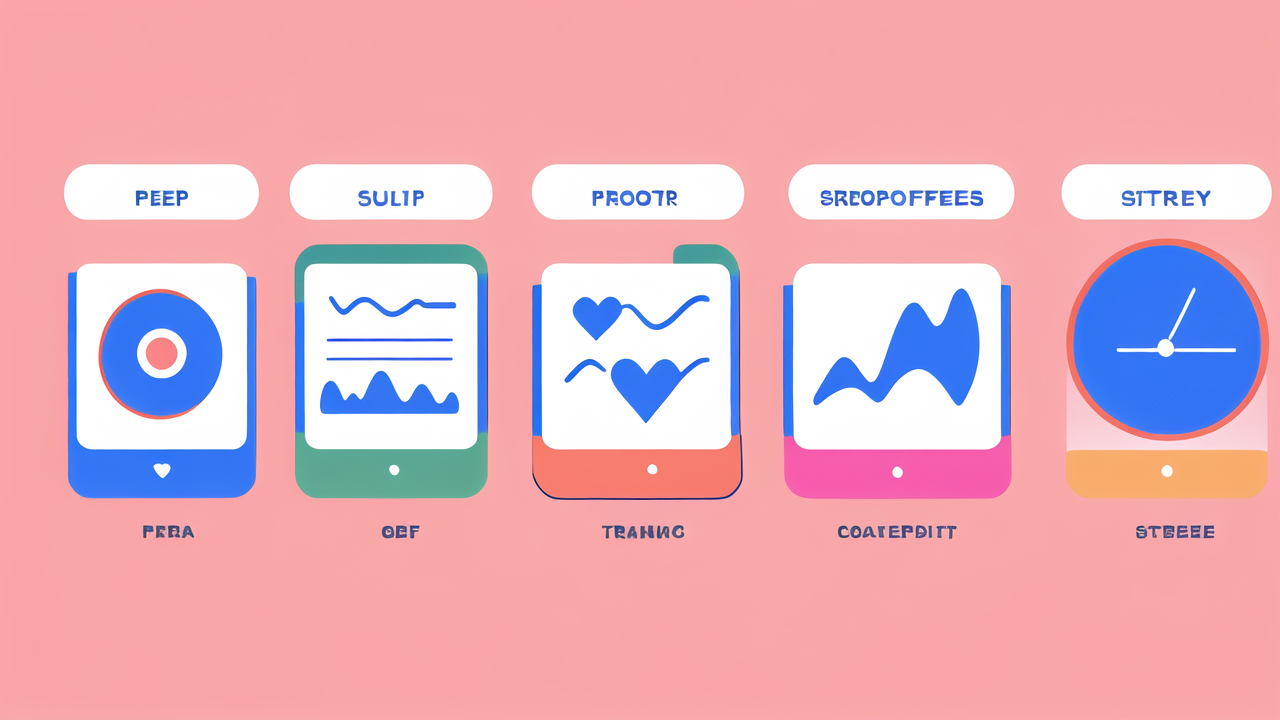Understanding the Importance of Body Measurement Tracking in Fitness
The Role of Trackers in Assessing Fitness Progress
Body measurement trackers play a crucial role in fitness journeys. They provide real-time data on various health metrics. This data helps users understand their progress and make informed decisions.

Trackers offer objective measurements of physical activity and body changes. They eliminate guesswork and allow for precise goal setting. Users can see tangible results, which boosts motivation.
Smart bands, a popular type of tracker, are worn on the wrist. They continuously monitor vital signs and movement. This constant tracking gives a comprehensive view of one's fitness level.
Key Metrics to Monitor for Fitness Success
When using a smart band, focus on these key metrics for fitness success:
- Steps taken
- Calories burned
- Heart rate
- Sleep quality
- Active minutes
- Distance traveled
These metrics provide a well-rounded view of your overall health and activity level. Steps and distance show your daily movement. Calories burned indicate energy expenditure.
Heart rate monitoring helps gauge workout intensity. Sleep quality affects recovery and overall health. Active minutes show dedicated exercise time.
By tracking these metrics, you can set realistic goals and measure your progress accurately.
How Tracking Can Motivate and Encourage
Tracking fitness metrics with a smart band can be highly motivating. Seeing daily progress encourages users to maintain their routines. It creates a sense of accomplishment and drives further improvement.
Smart bands often have built-in goal-setting features. These nudge users to increase their activity levels gradually. Achieving these small goals boosts confidence and self-esteem.
Many smart bands also offer community features. Users can share achievements and compete with friends. This social aspect adds fun and accountability to fitness journeys.
Consistent tracking helps identify patterns and habits. This awareness can lead to positive lifestyle changes. Users become more conscious of their choices and how they affect their health.
Selecting the Right Smart Band for Your Fitness Regime
Features to Look for in a Smart Band
When choosing a smart band, consider these essential features:

- Accurate step counting
- Heart rate monitoring
- Sleep tracking
- Water resistance
- Long battery life
- Smartphone compatibility
- User-friendly app interface
Look for bands with good step accuracy for reliable activity tracking. Heart rate monitoring is crucial for workout intensity measurement. Sleep tracking helps improve recovery and overall health.
Water resistance is important for swimmers or those who sweat a lot. Long battery life ensures uninterrupted tracking. Smartphone compatibility allows easy data syncing and analysis.
A user-friendly app makes it easier to understand and use your fitness data. Some bands offer additional features like stress monitoring or guided breathing exercises.
Comparing Top-Rated Smart Bands in the Fitness Market
Several smart bands stand out in the fitness market. Here's a brief comparison of popular options:
- Fitbit Charge 5: Known for its sleek design and comprehensive health tracking.
- Garmin Vivosmart 4: Offers advanced sleep tracking and stress monitoring.
- Apple Watch SE: Provides a wide range of fitness features and app integrations.
- Samsung Galaxy Fit 2: Boasts a long battery life and water resistance.
- Xiaomi Mi Band 6: Offers great value with basic fitness tracking features.
Each band has its strengths. Fitbit excels in user-friendly interfaces. Garmin focuses on detailed fitness metrics. Apple Watch offers seamless iOS integration.
Samsung provides good Android compatibility. Xiaomi offers budget-friendly options without sacrificing quality. Choose based on your specific needs and preferences.
Integrating Your Smart Band with Fitness Apps and Platforms
Most smart bands can integrate with various fitness apps and platforms. This integration enhances the usefulness of your tracker. Popular apps include:
- MyFitnessPal for nutrition tracking
- Strava for running and cycling
- Nike Training Club for workout routines
- Apple Health or Google Fit for overall health data
Syncing your smart band with these apps provides a more comprehensive view of your health. It allows you to combine activity data with nutrition information and workout plans.
Some platforms offer social features, letting you connect with friends and join challenges. This can add motivation and fun to your fitness journey.
Always check compatibility before purchasing a smart band. Ensure it works well with your preferred apps and smartphone.
Advanced Tips for Leveraging Your Smart Band for Peak Performance
Setting and Achieving Fitness Goals with Smart Band Insights
Smart bands provide valuable data to help set and achieve fitness goals. Here are some tips:

- Use baseline data to set realistic goals.
- Set both short-term and long-term targets.
- Regularly review and adjust goals based on progress.
- Utilize the smart band's built-in goal-setting features.
- Celebrate milestones to stay motivated.
Start by establishing your current fitness level using the smart band data. This helps set achievable goals. Set daily, weekly, and monthly targets to maintain momentum.
Review your progress regularly and adjust goals as needed. Many smart bands offer personalized goal suggestions. Use these as a starting point and customize as necessary.
Remember to celebrate your achievements, no matter how small. This positive reinforcement keeps you motivated on your fitness journey.
Analyzing Data to Refine Training Programs
Smart band data can help refine your training program for better results. Here's how:
- Identify patterns in your activity levels and sleep quality.
- Use heart rate data to optimize workout intensity.
- Track recovery time between workouts.
- Monitor long-term trends to assess overall progress.
- Compare different types of workouts for effectiveness.
Look for patterns in your daily activity and sleep. This can help you identify areas for improvement. Use heart rate zones to ensure you're training at the right intensity.
Pay attention to recovery time between workouts. Adequate rest is crucial for progress. Track long-term trends to see if you're moving towards your goals.
Compare the effectiveness of different workouts. This helps you focus on exercises that yield the best results for you.
Using Smart Bands to Prevent Injuries and Overtraining
Smart bands can be valuable tools in preventing injuries and overtraining. Here are some strategies:
- Monitor resting heart rate for signs of overtraining.
- Use sleep data to ensure adequate recovery.
- Pay attention to sudden drops in performance metrics.
- Utilize stress tracking features if available.
- Listen to your body and correlate feelings with data.
A consistently elevated resting heart rate may indicate overtraining. Ensure you're getting enough quality sleep for proper recovery. Sudden drops in performance could signal fatigue or potential injury.
Some smart bands offer stress tracking. High stress levels can impact recovery and performance. Always listen to your body and use the data as a supplement to your own feelings.
Remember, smart bands are tools to enhance your fitness journey. They provide valuable insights, but shouldn't replace professional medical advice when needed.




Leave a comment
This site is protected by hCaptcha and the hCaptcha Privacy Policy and Terms of Service apply.